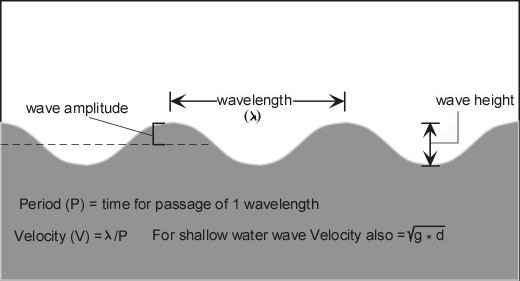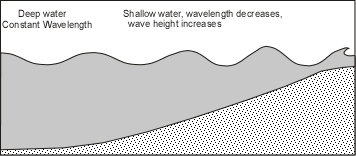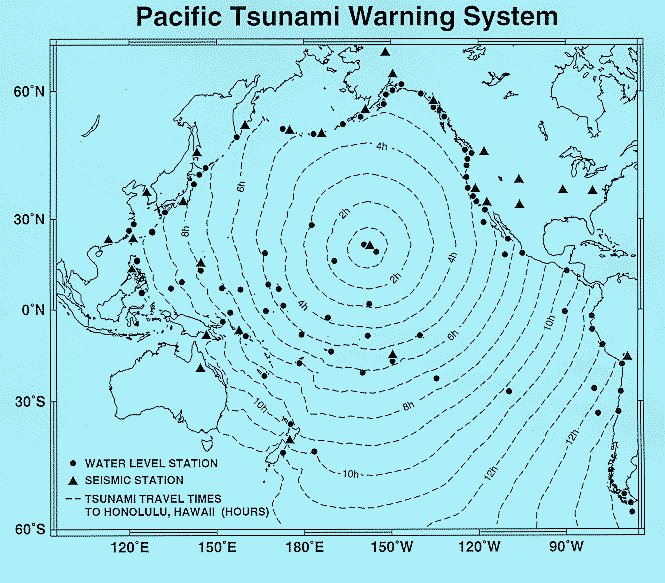Up until December of 2004, the phenomena of tsunami was
not on the minds of most of the world's population. That changed on
the morning of December 24, 2004 when an earthquake of moment magnitude 9.1
occurred along the oceanic trench off the coast of Sumatra in Indonesia.
This large earthquake resulted in vertical displacement of the sea floor and
generated a tsunami that eventually killed about 230,000 people and affected the
lives of several million people. Although people living on the
coastline near the epicenter of the earthquake had little time or warning of
the approaching tsunami, those living farther away along the coasts of
Thailand, Sri Lanka, India, and East Africa had plenty of time to move
higher ground to escape. But, there was no tsunami warning system in
place in the Indian Ocean, and although other tsunami warning centers
attempted to provide a warning, there was no effective communication system
in place. Unfortunately, it has taken a disaster of great magnitude to
point out the failings of the world's scientific community and to educate
almost every person on the planet about tsunami.
Even with heightened world awareness of tsunami, disasters still occur. On September 29, 2009, earthquakes in the Samoa region of the southwest Pacific Ocean killed nearly 200 people, and as a result of the Chilean earthquake of February, 2010, at least 50 casualties resulted from a tsunami triggered by a moment magnitude 8.8 earthquake.
On March 11, 2011 a Moment Magnitude 9.0 earthquake struck off the northern Coast of Japan. The Earthquake generated a tsunami that rose up to 135 feet above sea level and killed over 20,000 people. Because of Japan’s familiarity with earthquakes and enforcement of earthquake resistant building codes, there was only minor destruction from the earthquake itself. But, despite that fact that a tsunami warning system was in place, the earthquake was so close to the coast, that little time was available for people to react.
Besides that high death toll, the tsunami caused one of the worst nuclear disasters in history. The Fukushima nuclear power plant, located on the coast was hit by a 49 ft. tsunami wave that overtopped the tsunami protection walls that were only 19 feet high, and flooded the backup generators for the plant that were somehow placed on the first floor in a known tsunami zone!
We will first exam videos of the Japanese tsunami, (see also - http://www.pbs.org/wgbh/nova/earth/japan-killer-quake.html) then discuss some important points about tsunami, followed by a PBS video concerning the 2004 Indonesian Tsunami which killed over 230,000 people (see http://www.pbs.org/wgbh/nova/tsunami/).
The lecture notes below cover the essential points discussed in class and provide more details.
What is a Tsunami
A tsunami is a very long-wavelength wave of water that is generated by
sudden displacement of the seafloor or disruption of any body of standing water. Tsunami are sometimes
called "seismic sea waves", although they can be generated by mechanisms
other than earthquakes. Tsunami have also been called "tidal
waves", but this term should not be used because they are not in any way related to
the tides of the Earth. Because tsunami occur suddenly, often without warning, they
are extremely dangerous to coastal communities.
Physical Characteristics of Tsunami
All types of waves, including tsunami, have a wavelength, a wave height, an amplitude,
a frequency or period, and a velocity.
|


